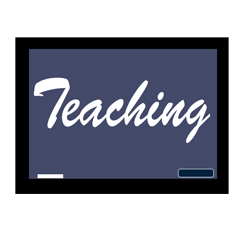 The Cold War History Blueprint: University–K-12 Collaboration to Improve History Instruction in U.S. Schools
The Cold War History Blueprint: University–K-12 Collaboration to Improve History Instruction in U.S. Schools
Session Abstract
The California History-Social Science Project proposes a session on the Cold War History Blueprint unit that it recently created to improve the quality and frequency of instruction in history in grades 10 and 11. The CHSSP is a collaboration between history faculty at California universities (as experts in historical content and analysis) and K-12 history-social science teachers (as experts in pedagogy). Alarmed at the marginalization of history as a discipline in the nation’s public schools, the CHSSP launched the Blueprint in 2011 to improve the quality of history instruction and inform public policy across the nation. The initiative’s goal is to create a comprehensive history curriculum - complete units for the history-social science standards for each grade - and make it freely available online. The CHSSP has written and piloted a Civil War unit and will have also launched one about the medieval world by 2014. The Cold War History Blueprint is the most ambitious of the Blueprint programs, as it spans content to be taught in two grade levels.
A team of university historians and teacher leaders write each unit, which combine lesson plans, primary sources, digital media, strategies to teach historical analysis and develop academic language, assessments and online support. Rather than teaching discrete facts, teachers thus focus their instruction around investigative questions and arguments which reflect current academic developments. In addition, History Blueprint professors and teachers write assessments designed to gather information before, during and after each unit about students’ historical knowledge and analytical ability, while technical team members develop the technological capacity to convey information on the assessments to parents. This session will examine different aspects of the History Blueprint’s Cold War unit from three perspectives. Beth Slutsky (History Ph.D., UC Davis lecturer, Coordinator at California History-Social Science Project) will address the ways in which the Blueprint strengthens connections between the academy and the K-12 schools, as she explores the process of collaborating with teachers from the academic perspective. Beth will also discuss the process of the Cold War unit development, particularly Blueprint’s efforts to compose analytical assessments. Beth Anderson (Ph.D., UCI, 11th-grade History teacher, El Toro High School) will present selected lessons from the Cold War unit, and analyze the process of collaborating on the Blueprint project from the perspective of classroom teachers. Rajbir Judge (Ph.D. Candidate, UC Davis) will explain his role in conducting primary-source research for a K-12 Cold War audience, and discuss the implications this has for graduate education in general. Moreover, Rajbir will discuss the significance of framing the Cold War from a world and US history perspective, for the purpose of translating the latest scholarship in high-school appropriate terms. Each presenter will speak for twenty minutes. Comments and a question-and-answer period will follow, facilitated by chair and discussant Nancy McTygue (Executive Director, California History-Social Science Project). The session targets a mixed audience of faculty and K-12 teachers who are interested in education.
